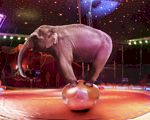Every single event carries a message. Whether that message is to raise awareness regarding climate change or build a community of followers, the same tools and means can be used for different objectives.
Through getting people together, events became incredible platforms for message diffusion, regardless of their meaning or format. Taking that into consideration, what exactly is a brand message, and how is it delivered?
As mentioned above, when planning an event, you might be chasing different goals. One of them is to help businesses and corporations to accomplish a series of intentions. For example, some of your event clients might be trying to get more warm leads and customers to buy their products.
Others might run events to strengthen the loyalty of their existing customers. In both cases, your responsibility will be to help them craft their brand message and embed it into the attendee experience.
In other words, you’ll have to take care of the strategic communication of the event by designing the framework for the brand message and delivering it correctly to the right people, in the right format, at the right time.
Pretty tricky, if you ask me. However, there are different things you should consider if you want to give your clients positive results and deliver a flawless experience to their event guests. Here are some of them:
Tip #1. Build a crescendo narrative
Don’t just launch the brand messages at the first event session (or on the first day if it’s a multi-day event). Build excitement by designing a well-developed storytelling strategy. You can do that through short videos (snippets), presented between sessions, that will reveal an important message at the end of the event.
Or you can instruct the moderators to tell the brand story during their talks. The key here is to delve deep into the structure of a good narrative or storytelling and use its elements, such as intrigue, two antagonistic realities, a desired result, challenges, and the final outcome (revealing the brand message).
It’s important to have a crescendo narrative and engage the attendees by sparking their curiosity (we’ll talk a bit later on how to do that).
Tip #2. Avoid oversharing
The problem many companies and brands have is the tendency to overshare and communicate everything, highlighting all the positive aspects, features, and benefits all at once. This might cause an overwhelming informational fatigue, and your attendees might not follow through with the narrative.
That’s why you should definitely avoid going this route. Before planning the event, think about the communication strategy and decide on the main ideas you want to transmit, chopping any fluff and building a powerful, yet concise message.
Tip #3. Create a sense of mystery
Captivate your attendees’ attention by wrapping the brand message into an exciting mystery they’ll want to solve. The human brain is wired to search for solutions and understand patterns, so most attendees will be hooked until the end.
For example, you can use gamification and engage your attendees in a puzzle-solving dynamic. Divide them into groups and give them enough clues and space to find the answer. You can schedule this as a separate leisure session or as an extended activity during the entire event, and reveal the answer at the end of the day (or event for multi-day events). Don’t forget to incentivize the attendees and design a clever puzzle to intrigue them into wanting to find the solution.
Tip #4. Set up sensorial experiences
There are different options and solutions for transmitting a brand message during events. This can happen through visual content, interactions between the attendees and the moderator (or the speakers), or brand experiences based on sensorial parameters.
Anything that involves the human senses will do. For example, you can use a specific fragrance throughout the event, or set up different climate circumstances to reflect an idea. Let’s say the event you’re running is dedicated to the launch of a new natural museum that wants to spark learners’ interest in evolution.
To show how the museum will make its vision a reality, you might set up a video that describes the evolution stages and modify the venue temperature accordingly. For example, when the video discusses the glacial era, lower the temperatures in the room. When the video describes tropical environments, hike up the temperature of the room suddenly. You can also add sensorial effects when the video displays a hoard of dinosaurs running by getting the sets to move. This fully immerses your attendees in the experience and will help you deliver the brand message in a more comprehensive, memorable, and effective way.
Tip #5. Gain the attendees’ trust
You can’t just deliver a brand message and expect your guests will take it as it is and act upon it. You need to build a relationship with these people first. After all, this is why we plan events in the first place: to strengthen the connections between different stakeholders for further collaborations. Get your attendees to trust you by focusing on solving their problems. Make sure your event resonates with their personal agendas and provides the necessary answers and solutions to issues they might have.
Final thoughts
A brand message involves building a communication strategy that helps a company speak their prospects’ language, share their values, and coax them into certain beliefs and thoughts during the event. And although it’s difficult to determine its effectiveness in the moment, finding ways to deliver a brand message can be a creative process for both the planner and the attendees.





